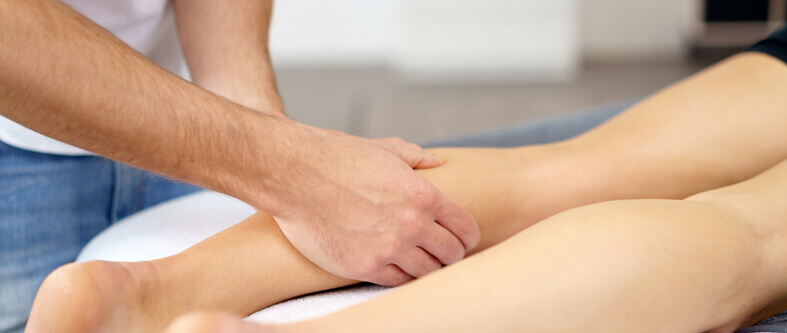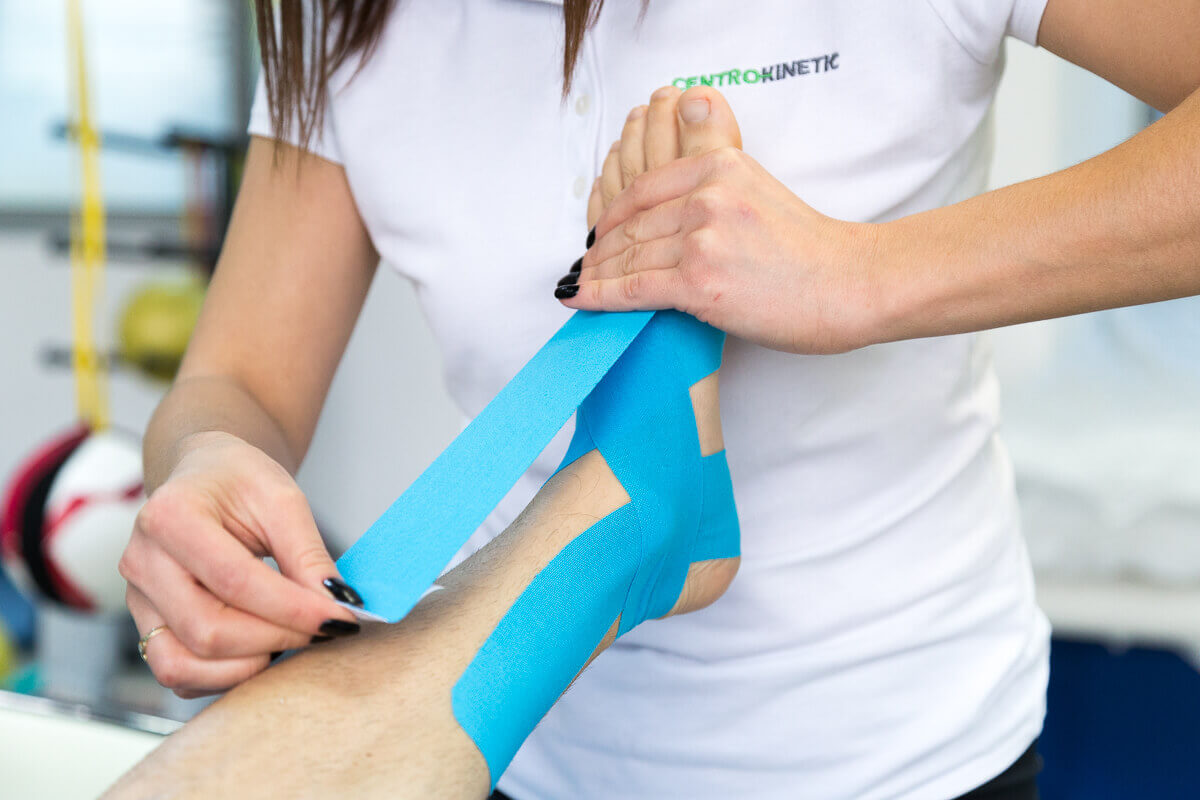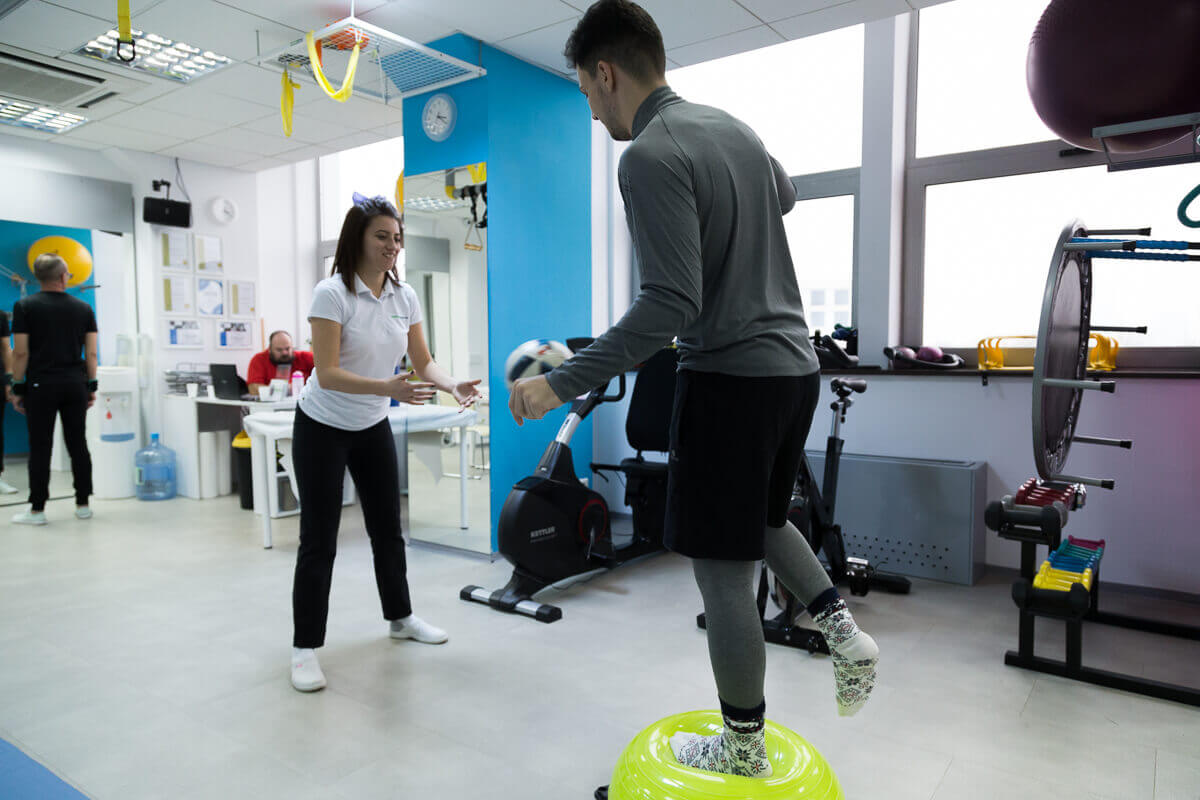See details
READ MORE
Physical therapy after muscle ruptures
- Grade 1: minor injury that affects a small number of fibers muscle (less than 5%). It is a fibrillar lesion (affects several muscle fibers), practically a muscular stretch. Clinical: pain localized, without functional impotence, stiffness and cramps at 2-5 days after trauma.
- Grade 2: Medium lesion affecting an extensive number of muscle fibers but the muscle is not completely broken. The injury is fascicular type (several fascicles of muscle). Clinical: intense pain, swelling, moderate bruising (subcutaneous hematoma), stiffness and cramps lasting one week.
- Grade 3: severe injury with complete muscle rupture. Clinical: sudden, intense pain, inability to contract the muscle, bruises and significant swelling, on inspection the muscle itself observe prominently.

Treatment of muscle tears
- R (rest) = rest, ie reduction or even stopping sports activity and more demanding domestic activities. A crutch can be used if it is an injury to lower limb level. In some cases it is even recommended total bed rest. The duration of rest from exertion is established by a doctor.
- I (ice) = ice, ie its application on the areas traumatized for 20 minutes 4-8 times a day. Not applicable directly on the skin, but wrapped in a towel.
- C (compression) = compression, ie maintaining a pressure constant using the elastic phase on the ankle, knee, elbow or the affected shoulder.
- E (elevation) = lifting the affected limb from the plane horizontally. Basically, in a sloping position (lying down) the limb rises traumatized on a pillow, above the plane of the heart.

The second phase of treatment aims to restore muscular function. Most patients reach this stage directly, precisely because they completely neglected the first phase, which is not the case desired.
About Centrokinetic
Centrokinetic clinic offers all services necessary for a complete rehabilitation process, from the first consultation to the medical specialist to establish the correct diagnosis, to treatment and recovery.
Centrokinetic is the place where you will find clear answers and solutions for your motricity problems. The clinic is dedicated to osteoarticular conditions and is divided into the following departments:
- Orthopedics, a department composed of an extremely experienced team of orthopedic doctors, led by Dr. Andrei Ioan Bogdan, primary care physician in orthopedics-traumatology, with surgical activity at Medlife Orthopedic Hospital, specialized in sports traumatology and ankle and foot surgery.
- Pediatric orthopedics, where children's sports conditions are treated (ligament and meniscus injuries), spinal deformities (scoliosis, kyphosis, hyperlordosis) and those of the feet (hallux valgus, hallux rigidus, equine larynx, flat valgus, hollow foot).
- Neurology, which has an ultra-performing department, where consultations, electroencephalograms (EEG) and electromyography (EMG) are performed.
- Medical recovery for adults and children, department specialized in the recovery of performance athletes, in spinal disorders, in the recovery of children with neurological and traumatic diseases. Our experience is extremely rich, treating over 5000 performance athletes.
- Medical imaging, the clinic being equipped with ultrasound and MRI, high-performance devices dedicated to musculoskeletal disorders, and complemented by an experienced team of radiologists: Dr. Sorin Ghiea and Dr. Cosmin Pantu, specialized in musculoskeletal imaging.
Find the latest news by following the Facebook, Instagram and YouTube accounts of the Centrokinetic clinic.
SUCCESSFUL RECOVERY STORIES
MAKE AN APPOINTMENT
FOR AN EXAMINATION
See here how you can make an appointment and the location of our clinics.
MAKE AN APPOINTMENT




































































































































